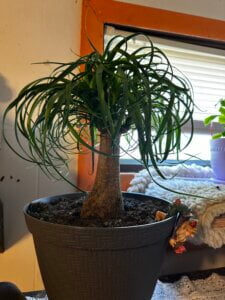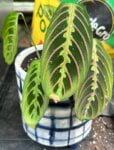House plants require proper potting Mix and regular watering to thrive. Use suitable plant pots to provide the necessary conditions for healthy indoor plants.
Here I will post pictures and information on my house plants and other plants, The soil I use, watering, and fertilizing.
Here are all the plants that I have!
Each plant will have its own page with pictures, information and any updates.
I decided to go on amazon, 🙂 that place can get you in trouble. I did make me a Wishlist and
will add to it later. I do share my list so I will with you maybe it will give you some ideas. I use the list when I need or want to get a few things for myself.
Here is my List!
Thanksgiving Cactus
I got and what it looks like now. I will take a better picture of it. I have it sitting in the window for now. as it doesn’t get too much direct sunlight.
For more information and updates on the cactus plant visit its page!
~~~~~~~~~~~~~~~~~~~~~~~~~~~~~~~~~
Spider Plant
This is the spider plant I got Sunday. I replanted it in this pot. it was so crammed in the other pot. So far, it’s doing good I have it sitting in my window with my Thanksgiving catus. 
For more information and updates on the spider plant go to its own page!
Spiderwort
Info will be on this page
Plant coming soon it’s not ready just yet…
Spiderwort is a wildflower characterized by a grass-like form with long, strappy leaves and pretty quarter-sized, three-petaled flowers that open in the morning and close by early afternoon, each bloom lasting just one day. The plant thrives in moist but well-draining soil but is otherwise unfussy, growing well in both sunny and partially shady environments and a variety of soil conditions and pH levels. Spiderwort is considered mildly toxic to humans and pets.12
Ponytail Palm Tree
I didn’t think to measure how tall it was when I got the plant so I will start measuring it when I take a picture of it. as of 6/12/24 it is 10″ tall, this is from the top of the soil to the top of the plant. I will measure at the beginning of the month again. 
Check out the Ponytail palm tree for all the information about this plant on its own page.
Purple Velvet Plant
Purple passion vine should be grown in bright, indirect light to filtered sun. Water this plant often enough to keep the soil moist, but not soggy, throughout the growing season. opt for pots with plenty of drainage to help prevent root rot, planting your purple passion vine in soil like a commercial potting mix with vermiculite.

For more information and updates on the purple passion plant
visit its own page!
Prayer Plant
‘Prayer plant’ is a colloquial term that refers to members of genus Maranta, to which genus Calathea is closely related. In reality, both are considered to be ‘prayer plants.’ The name comes from the tendency of plants in this family to droop, or ‘pray’ at night. Some of the most popular prayer plants in cultivation are Maranta leuconeura or M. leuconeura ‘Tricolor.’ Many species of Maranta produce rosmarinic acid, one of the active components of rosemary that give it the characteristic rosemary scent.

Check out the Prayer Plant! for all the information about this plant it’s on its own page.
House Plant Information
A houseplant, sometimes known as a pot plant, potted plant, or indoor plant, is an ornamental plant that is grown indoors. As such, they are found in places like residences and offices, mainly for decorative purposes. Common houseplants are usually tropical or semi-tropical and are often epiphytes, succulents, or cacti.
Select a pot that the plant can grow into. Indoor plants typically come in a temporary pot that is made just right for them.
With your dedication to helping them grow, they will outgrow their space and need a larger pot.
Selecting a pot that is at least 50% larger this way lets the roots spread out and help with the health and growth of the plant.
Fill With Potting Soil
Good quality potting soil like Miracle-Gro Indoor Potting Mix has been blended for a wide variety of container plants.
The mix has an easy-to-water formula that helps the soil re-wet while feeding for up to 6 months.
there are others but this is what I use.
Feed It
While watering is a key element to growing indoor plants, feeding a plant is where most people lose the battle in sustaining life in their plants. There are several options for plant food. I use the Plant food spikes they are a set-it-and-forget-it solution, for the most part. These spikes provide a continuous supply of important nutrients right at the roots, where plants need them the most. The pre-measured, specially formulated spikes are simply inserted into the soil around your plant and just Apply a fresh stick every eight weeks.
~~~~~~~~~~~~~~~~~~~~~~~~~~~~
Water It
The frequency of watering the plants will vary based on the size and type of your plant.
Plants like succulents don’t need water as frequently as other plants like ferns. With most plants, the frequency is based on how the soil feels.
If it’s dry to the touch or crumbly when picked up, then it’s time to water. Don’t base your decision on just what the top of the soil feels.
If you place your finger just a bit deeper into the soil and still feel it is dry,
then you know that deeper down the plant is likely not getting the water it needs.
The amount of water your plant needs will depend on the size of the pot.
The amount of water to use is typically about ¼ to ⅓ the pot’s volume of water.
Just keep in mind that whatever water the plant can’t handle will come out of the bottom.
You may want to place your plant on a planer plate to catch extra water.
Give It Sun
All plants need sunshine, but the amount of sun they need varies from plant to plant.
When you purchase a plant, it should come with an informational card on the amount of sun needed.
Use that card to decipher the best location for your plant’s location. It’s best to think about what’s best for your plant vs. what’s best for your decor.
~~~~~~~~~~~~~~~~~~~~~~~~~~
Products I use
Miracle-Gro Cactus, Palm & Citrus Soil is a fast-draining soil that contains the nutrients your desert-loving plants need to thrive12. The soil features sand and perlite to help create the optimal growing environment1. It is fortified with iron and plant food to prevent leaf yellowing and other common nutritional deficiencies1. The added fertilizer feeds cacti, palms, citruses, and succulents up to 6 months1. The soil also contains bone meal and Moisture Control® to protect against over- or under-watering2.
Here are some tips for rooting a plant in water:
-
CuttingsUse a cutting that’s about four inches long and has three or more leaf groupings. You can cut below a node and remove extra leaves. Some recommend dipping the cutting in rooting hormone before placing it in water.
-
WaterPlace the cutting in a glass of water, submerging about two inches of the stem. You can put multiple cuttings in the same container, but make sure their leaves don’t touch. Use tap water, and change it once or twice a week, adding more when the level drops. You can also spray the cutting with hydrogen peroxide or add it to the water to prevent root rot.
-
EnvironmentKeep the cutting indoors in a place with bright, indirect sunlight for six to eight hours a day. The regulated temperature will help prevent stress.
-
RootingRooting usually takes 3–4 weeks, but it can take longer for some plants. The cutting is ready to be potted when its roots are 1–2 inches long. You can pre-moisten some potting soil and make a hole for the cutting with a pencil. Gently place the cutting in the hole and firm the soil around it, trimming back any leaves that touch the surface.













